Pedro
—
A Conversation in a Cork Oak Tree
Hailing from Mozambique, Pedro Valdjiu’s family was amongst the wave of 250,000 immigrants that fled to Portugal in the late ‘70s. This surge in migration was a response to the violent, decade-long war of independence that had left many people’s livelihoods at risk. Pedro clearly recalls how his parents struggled to gain a foothold on the Iberian Peninsula in his early childhood. Like many of their kin, they were shocked to find themselves treated as refugees, in spite of their Portuguese heritage.
Pedro was educated in public schools, which did little to support his sense of identity or ignite a thirst for knowledge. Feeling very much out of touch with a system that he claims propagates monolithic and individualistic thinking, he sought refuge in the arts well into adulthood. Decades later, his lifelong quest for purpose would lead him to delve into studies of “pattern education” before settling down in the foothills of Sintra Mountains. It was here in the tiny village of Ulgueira that Pedro and his life partner Rita Sexias founded the Waldorf school Escola da Terra in 2008, followed by the permaculture project Terra Alta in 2010.

Fast forward to September 2019, Pedro speaks to me of his past, his present, and his visions for the future while comfortably seated in the crown of his favourite cork oak tree. One of the oldest and largest evergreens on his property, it has manifested itself into his daily sanctuary. Its coarse, robust bark and twisting branches emanate a sense of time that reaches far beyond any human being’s lifespan. This magnificent tree stands tall, like a safe keeper, guarding the stories of the soil that its roots are entangled in. Perched up in its arms, Pedro appears almost part of the landscape—his weathered hands bear marks of his labour on the land, his smiling eyes reveal a complex individual with a contemplative spirit.
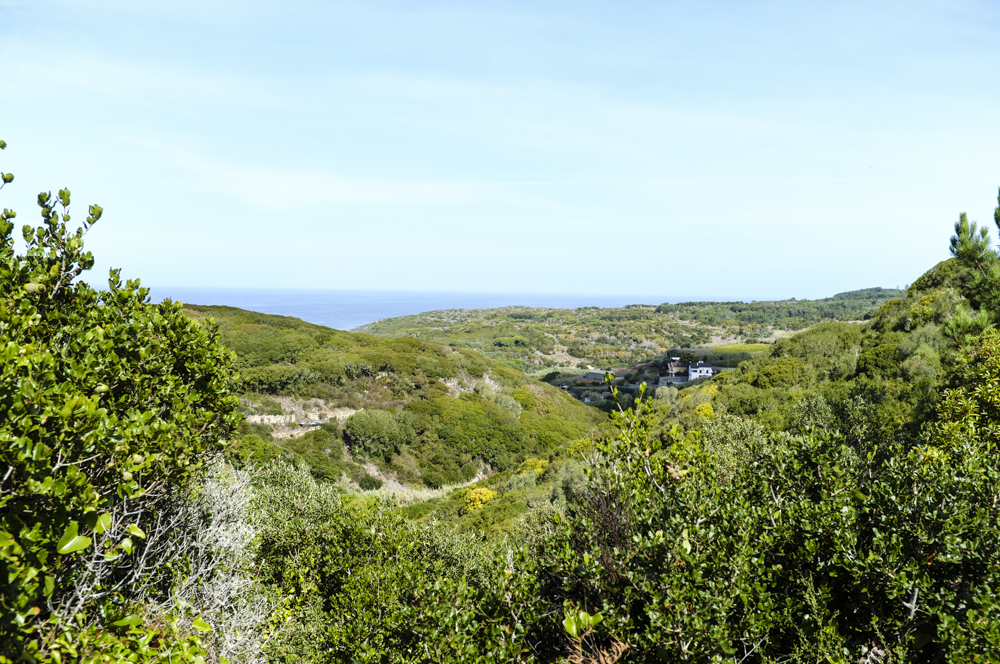

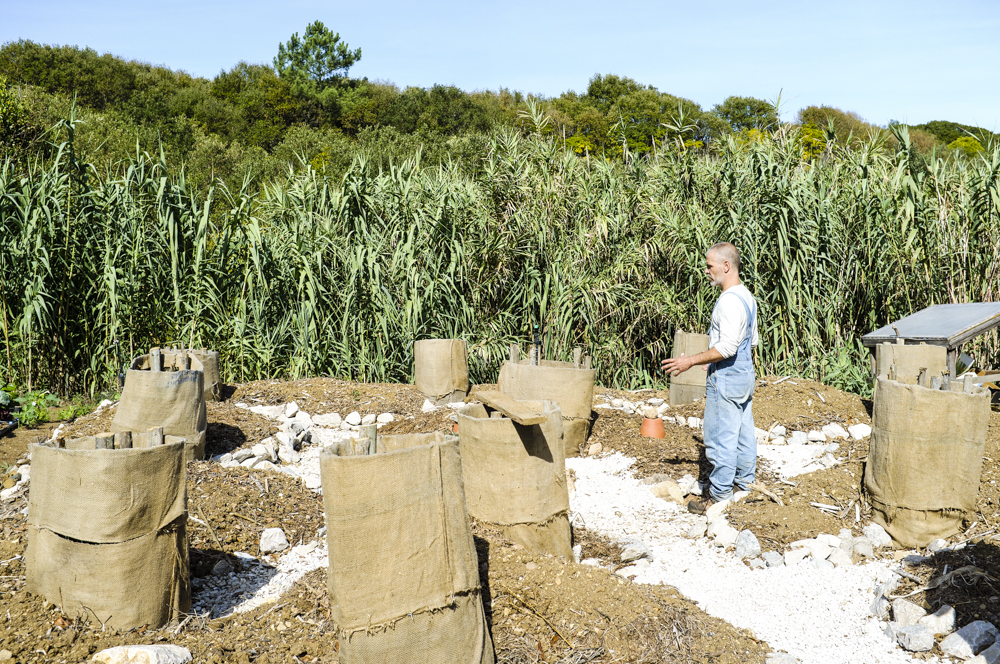
It was as a musician on the road that you first set foot into the world of permaculture. Describe your journey.
I’ve actually been connected to music since I was a child, so my main activity in life is being a musician. I’ve been playing in a band since I was 17. I’m 44 now, and I still play at festivals and do international tours. I created many of my own instruments. The band, Blasted Mechanism, is quite unique. It mixes a bit of performance and carries a strong message.
> Listen to ‘Egotronic’ by Blasted Mechanism.
As I was touring, I began to realise how poorly designed the world was, and that we as humans aren’t really welcome in what we have created for ourselves. At the time, I was also contemplating how much we have been trained to see from the window of a car. I did so many kilometres looking out of the van. We are trained to see monocultures and say, “Wow, this is so beautiful. It’s green. It’s as it should be in nature.” But actually, eucalyptus or grapes or pine forests are businesses, and my heart was really really shrinking. Then one day at Boom Festival in 2008 I got in touch with the Permaculture movement. And I couldn’t believe that I finally had something. I could finally be part of a solution. I could position myself to be part of the solution. And this was the first time because ecology was not really giving me this. Neither was biology or engineering. I felt that I was part of a global movement that is committed to healing. Healing of humankind to be honest. Nature is good. It’s going to [out]survive us. What we need to heal is the connection, the arrogance we have towards human beings. I started to become quite interested in studying patterns, which is the core curriculum. So I was really committed to developing this.
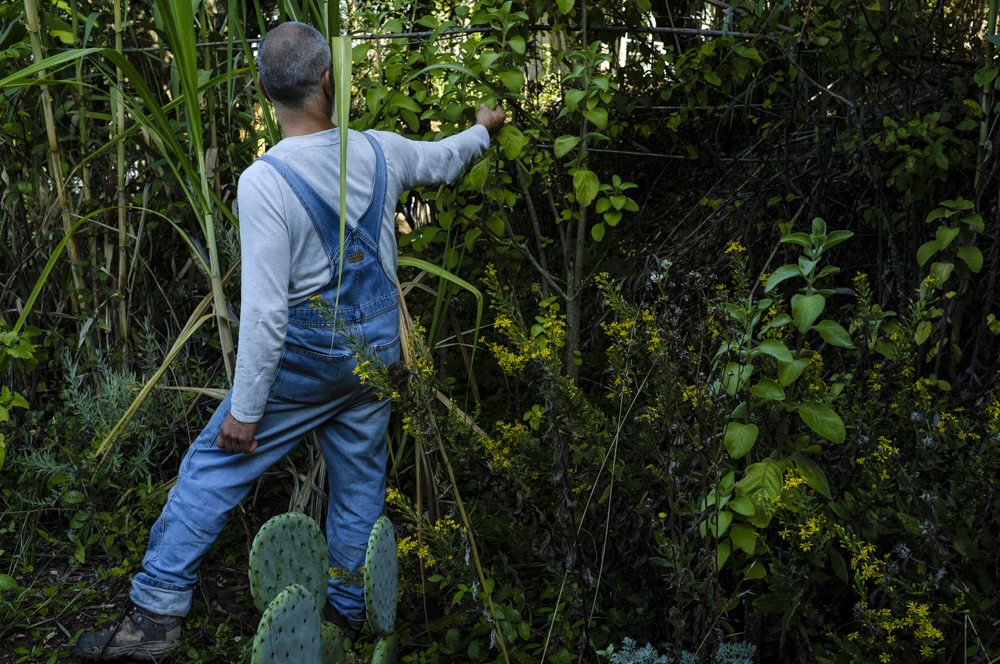
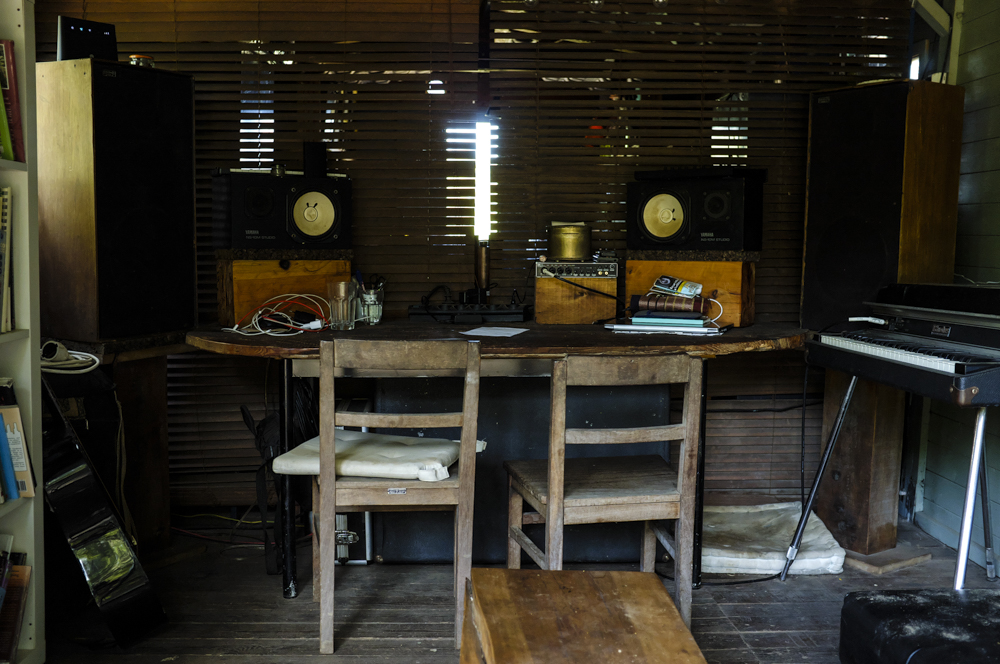
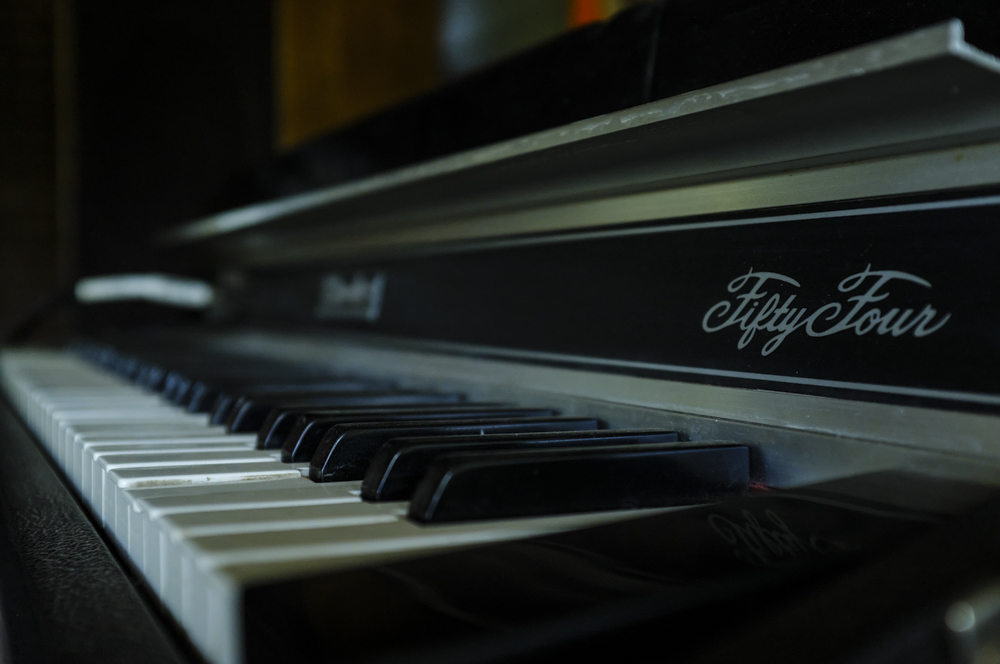
You live on-site with your partner, Rita, and your 16 and 17-year-old daughters, Jasmim and Zoe. The girls spent most of their childhoods here. How did this set-up impact your day-to-day family life?
Well, now my daughters are studying in Lisbon. They used to study with us in the Waldorf school that we started up in the village in 2008. We run the school, so we were all part of it. But now, you know, they are getting to be a different age. I think in the beginning it was quite interesting for them. They were quite brave to be here because we live off the grid where there was sometimes a lack of electricity, and the compost toilet was outside. It was not always easy for them, but they are quite connected. They really like being here. We couldn’t do 7th, 8th and 9th Grade unless they were via private homeschooling, so we did that here in the Star Dome. It was our classroom, their classroom.

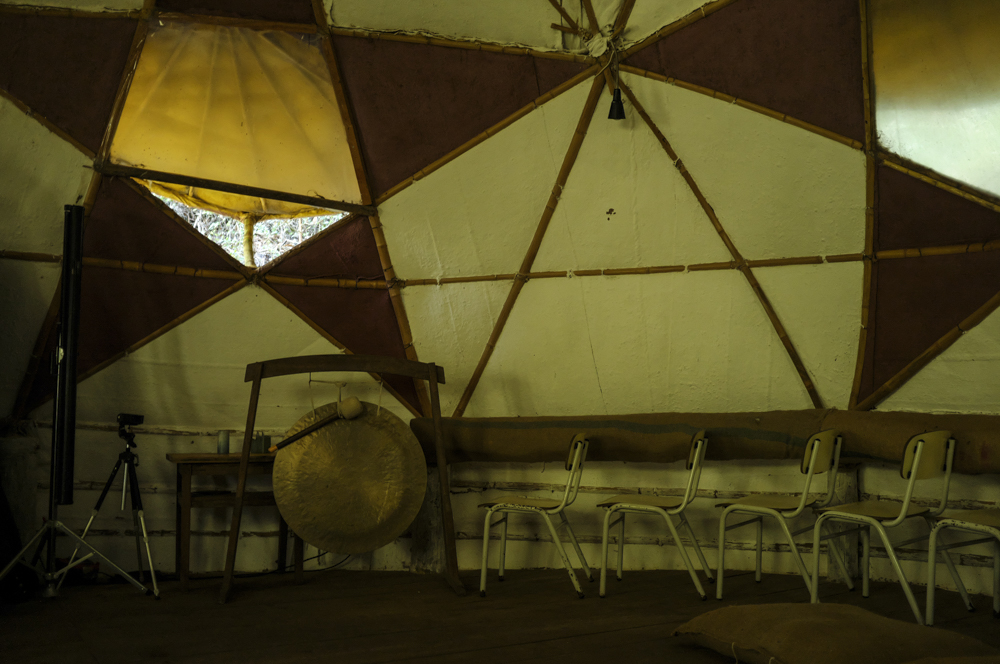

What is your biggest hope for your children?
I hope they live their gifts. That they find what they connect with, what they like to do in a world that’s more and more difficult for teenagers to live in.
Tell me more about your relationship with Rita. You met as teenagers...
Yes, I met her when I was 17. She was actually a friend of one of the guitarists in a band I sometimes played in. To be honest, I am following her. Although I am doing a lot by myself now, it was she who always had the connection to nature because she was raised by her grandparents on a farm. I didn’t know what this connection was. It was just all “I don’t care. I’m an artist. I’m ego-centric. My career is what interests me most.” But then, to live with a woman who you already know is special… For me, women really carry the solution. Today, speaking about gender is super dramatic. But I don’t really care. In my own story, there is a quality that women carry that really shaped my tenderness and my compassion for the world. So yeah she helped me in that regard. She had the vision to create the school and to do all of this. She’s the visionary. I’m just a servant. [laughs]
How would you describe your relationship with your land?
Well, I’m a hermit here now. I’m in love with this place. There was a very special Portuguese poet who said there is this problem that when you start to be in one place so much, you can get stuck in that place. It’s like a relationship with a lover. It needs to be…




...evolving?
Yes and not codependent. So it’s interesting. I’m always on this fragile line. I’m afraid of being swallowed by the dream of the hermit.
So what do you do when you’re not busy working on your land?
Touring with the band.
And you’re also a filmmaker and a trained construction worker?
Yes, I have a degree in cinema. I love cinema because it’s a very holistic art. I hope we can really change a lot of ourselves and others through storytelling. For me, it was more about studying aesthetics and art than studying cinema. I studied building too. I like building, but I’ve studied a lot of things. I still haven’t found myself. I’m still lost. I’m still looking for myself.

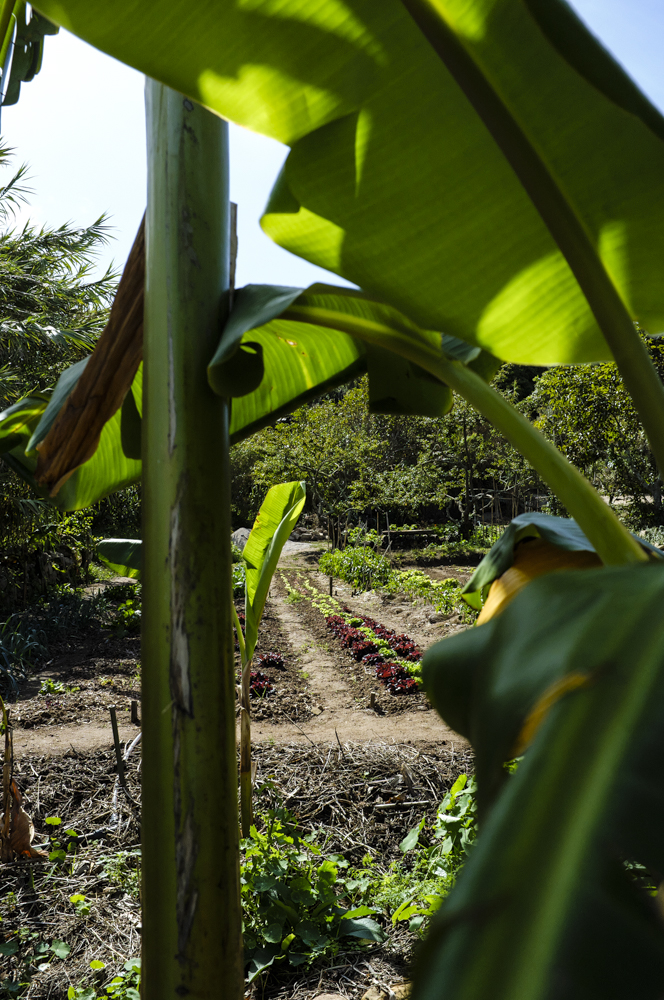


What is it about the concepts of „reconnection“ and „connection“ that fascinate you so much personally?
When we say „reconnection“, it means that something was lost before. And it was definitely lost. Looking at my own education, I could already see that schools were not really trying to connect me to anything. Religion is losing its power. In a way, religion was a source for many people to connect to something. Something quite encrypted and unfortunately not really with a basis in nature. At least not in the simplicity of nature. Therefore, there is a process of reconnecting again to two different forces: One is the Mother—which represents matter—which is the material world. And then the other is the Father—that represents patter—which is where the world’s patterns come from. When we think of patterns, we are talking about the connection with the Father. But we need two forces for harmony—we need a father and a mother for life to happen. At the moment, we are just materialistic, and the reason we are not looking at nature from a sacred perspective is that we are fatherless. We don’t carry a sense of pattern recognition anymore. So we need to study both to be holistic human beings.
Tell me something that you find fascinating about a plant on this property.
It would definitely be the cork trees. What’s fascinating is that I’ve been sleeping in this valley for more than ten years and I’ve recognised similar dream patterns in everybody that sleeps in this forest. I began studying and researching the different spiritual qualities of trees. This you can study from the Celts (we are a Celtic place in Sintra) but also from biodynamic farming. According to Steiner, if you want to connect with a tree, you need to be in the same state as the tree. The tree is sleeping. Nature is sleeping. So you have to sleep under the tree to talk to the tree. But this specific tree it has the cork, and cork protects it from weather, from bugs, from fire. It’s very resistant this tree, it doesn’t get burned. So this is a “protection” tree. And when you sleep under this tree for a while it will start to play and softly open what you have been protecting yourself from—your trauma, things you have been hiding from yourself. But very gently. It just shows what you can process, so it’s not just like a ceremony or an ayahuasca ritual that gets you trouble for two years because you are processing a lot of information. This is soft. It’s very unique. I’m very surprised.




What would you love to learn in this lifetime?
I would love to dance. Contemporaneous dance. And maybe to walk on water.